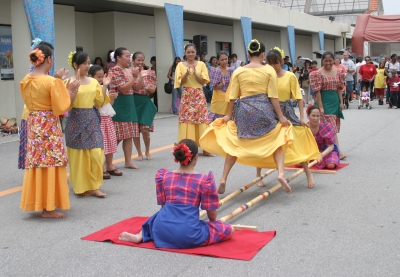Get ready to embark on a journey into the world of diasporic writing. What are its origins, influences and themes? Let’s retrace the steps of those who left their homeland for new horizons and contributed significantly to literature.
Agenre of literature we wanted become familiar with was sporic writings. We had and the term on several asions but were unsure of its weaning. So, we decided to te a professor from the literature department of a nearby college and what follows is the report on some of the key ideas he presented. He started by explaining the meaning of the term diaspora: it refers to the people who move away from their homeland to live in other Countries- mostly for better prospects. Today, in our Country, many young people wish to leave the country for education, job, and business.” Diaspora is not a new happening: even in the distant past as early as the first Century AD, Indians had migrated to other places primarily for their livelihoods and economic needs. There was also involuntary migration Across the seas due to forced labour, those who were displaced ultimately settled in those areas. However, from the 19th Century onwards. people started voluntarily shifting to other countries in great numbers for multiple reasons.
India’s diaspora is the largest in the world: it is estimated to be about 32 million, and they are settled in almost all the countries around the globe. They are referred to by terms such as NRIS (Non-Resident Indians), PIOS (Persons of Indian Origins), and Overseas Citizens of India (OCI). However, NRI is the term used most commonly. The largest number of members of Indian diasporas in a single city are living in Durban in South Africa for generations, and UAE hosts the maximum number of this community. Many educated youths aspire to settle down in the U.S., where they constitute the second-largest immigrant group, with four million Indians living there.
Interestingly, the Indian diaspora maintains close ties with the country, which cannot be guaranteed in the days to come. The speaker cited the well-known novel, The Namesake by Jhumpa Lahiri, wherein the children of the Ganguli family – Gogol and his sister, Sonali don’t enjoy their visits to India. In their quest for identity, they prefer to be Americans rather than Indians. Gogol’s marriage with Moushumi, an Indian, ends in a disaster, and Sonali marries Ben, a Jewish Chinese. Both, unlike their parents, attempt to delink themselves from their homeland.
The Indian diaspora has made significant contributions to different walks of life, and among them, their writings deserve special mention. The Indian diasporic literature has emerged with its distinctive characteristics from the mid-20th Century onwards from different parts of the globe but centred in English-speaking countries. Some of the established contributors to this genre include Salman Rushdie, Anita Desai, Bharati Mukherjee, Amitav Ghosh, Jhumpa Lahiri, Chitra Banerjee Divakaruni, Uma Parmesvaran, A.K. Ramanujan, Rupi Kaur, and VS. Naipaul Additionally, diasporic writings exist in most of the regional languages as well.
Most of these writers are novelists, who dealt with their own life experiences, exploring the themes like existential anxieties, culture shock, displacement, rootlessness, disorientation, nostalgia for their motherland, search for identity, challenges of integrating with the dominant culture and so on. However, the second and third generations of diasporic writers now portray different perspectives of their life: digressing from the first generation, they are celebrating their double identity and belonging to both cultures. The image of a ‘melting pot is replaced with a ‘salad bowl’ as they retain both of their identities and no longer feel like aliens occupying foreign lands. These writers have become an integral part of Indian Writing in English and the courses taught in our universities include many of them. The professor then proceeded to focus on VS. Naipaul and highlighted two significant details about him he was awarded the Nobel Prize for literature in 2001, the only one to win the honour among the Indian diaspora so far. Three of his non-fiction works, namely, An Area of Darkness: An Experience of India, India: A Wounded Civilization, and India: A Million Mutinies Now. along with the novel A House for Mr Biswas, deal explicitly with the country. Naipaul makes a scathing attack on India in his trilogy: he finds. the unhealable wound in modern India in terms of ignorance, illiteracy, poverty, corruption, low standard of living, unhygienic conditions, and the fall of old values.” The speaker recommended we read these books to find out how far we concur with his portrayal of our country.
He wrapped up his talk stating that his favourite writer is Rohinton Mistry, an Indian-Canadian writer, and he would speak about him in detail the next time.
Picture Credit: Google

